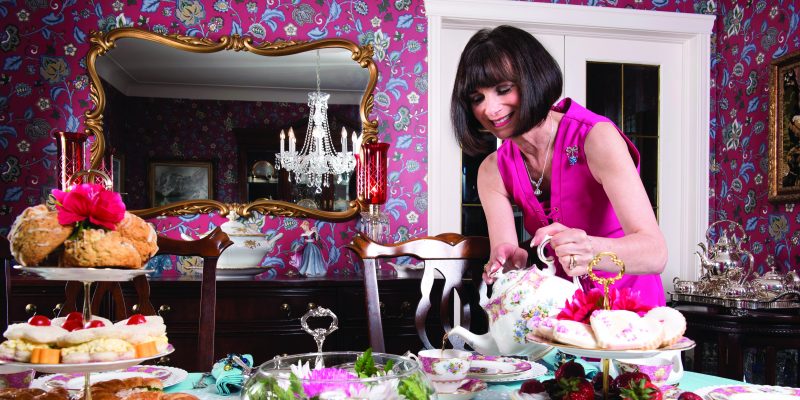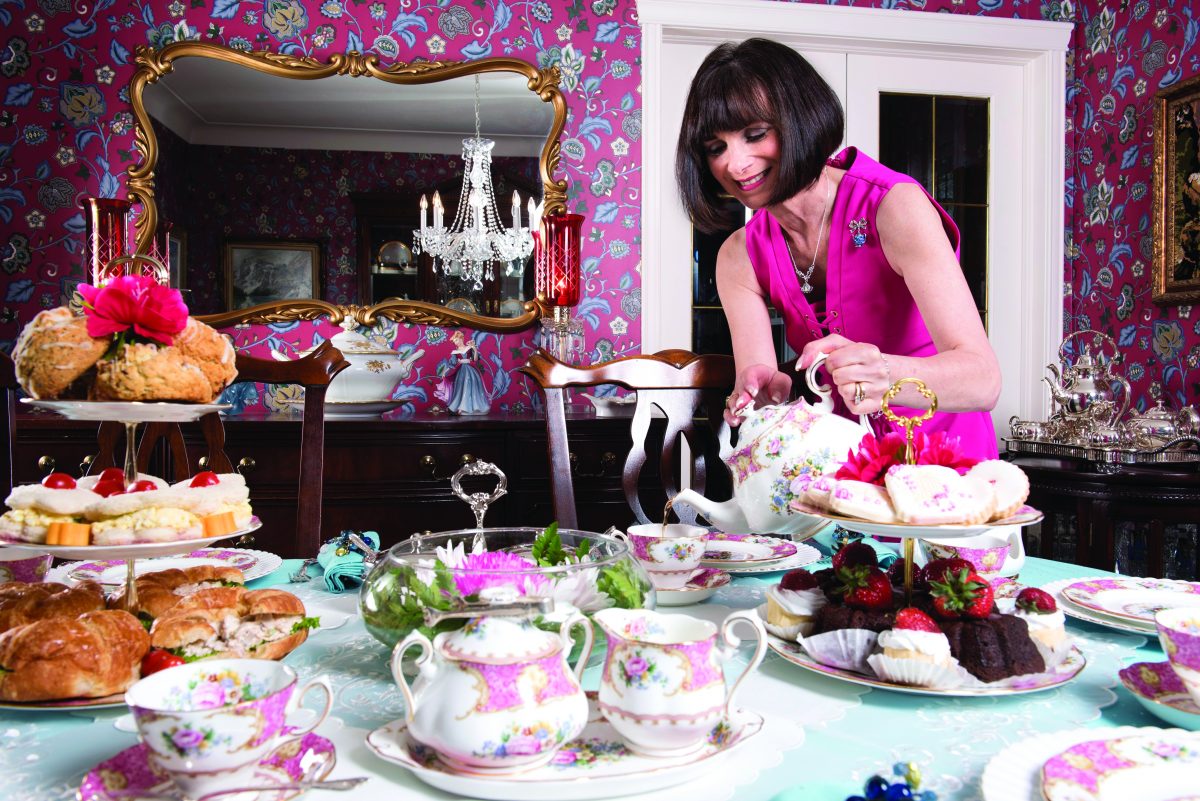By Anneliese Lawton
You have created an elegant and fun way for friends and family to make lasting memories around a cup of tea. What inspired you to start the Travelling TeaRoom?
The Travelling TeaRoom business was a dream of mine that has become a reality. I grew up in the restaurant business in Hamilton, and my experience with and passion for tea, I attribute to my mother. The calming and relaxing pleasure of tea, along with the many healthy benefits fuelled my interest and love affair with the ritual.
Another interest of mine is collecting beautiful things like delicate china, figurines, vintage linen and antique furniture. The love affair with tea and all things beautiful gives me the extreme pleasure to share my outstanding collection with The Travelling TeaRoom guests.
The Travelling TeaRoom offers tea parties (with some pretty creative themes, we might add) for a wide variety of celebrations and holidays. What would an afternoon tea look like?
The Travelling TeaRoom serves an authentic British teatime in your home or office for any occasion. Our service includes the table linen, fine bone china and accessories, food, service and clean up. You are a guest in your own home. Our extensive menu includes freshly baked scones accompanied by clotted cream and fruit preserve, an assortment of savouries, sweets and bottomless cups of our specialty teas. We offer a variety of time-honoured Tea Plans, such as, Cream Tea, Afternoon Tea — also referred to as High Tea — Deluxe Afternoon Tea, Matriarch Afternoon Tea and Children’s Tea. We offer Custom Themed Teas for fans of Downton Abbey, Pride and Prejudice and Phantom of the Opera.
Outside of your typical cucumber sandwich, what food is best paired with a cup of tea?
The choice of food and type of tea served can vary according to taste and time of year. For example, a summer tea might include a selection of light sandwiches, cakes and strawberries, when available. In winter, teatime is a cozy affair, with rich flavours like gingerbread and pumpkin. And of course, Afternoon Tea could not be complete without traditional scones accompanied with delicious fruit jam or marmalade and clotted cream.
What makes a quality tea? How do some tea makers set themselves apart from others?
There are four basic ways to determine quality tea: sight, touch, smell and taste.
High-quality dried tea leaves should feel how they look: smooth, whole and sturdy. It should also have a slight heft in your hands; if your tea feels feather-light, it may be an indication that it was over-dried or is getting old.
No matter what kind it is, high-quality tea will have a distinct aroma. If you inhale deeply and are getting only trace amounts of scent, this could be a sign that the tea is low quality or getting old and stale. Green tea should smell grassy, light and fresh, while black tea should smell earthy, floral and sweet.
Great tea will have a strong, recognizable taste. The best-tasting green tea will feel and taste smooth, bright and refreshing, while black tea has a deeper, more intense taste. Regardless of what type of tea you’re sipping, excellent tea will activate different flavour sensations on your tongue as you drink. Flavours that are barely noticeable, overly astringent or unpleasantly chemical tasting are an indication that you are drinking low-quality or old tea.
Once you’ve picked your tea, what’s the best way to prepare it?
To brew the perfect cup of tea, first, the tea must be carefully stored in an airtight container that protects the leaf from light, humidity and contaminating odours, and guards its freshness and quality.
Brewing is dependant on temperature and time. To begin, pour the boiling water onto the leaves, replace the lid of the teapot, set the digital timer and allow it to brew for the correct number of minutes. In general, small-leafed black teas need two to three minutes, larger leaves need three to five minutes and oolong teas need five to seven minutes.
When brewing green or white tea, allow the boiled water to cool to 165 degrees F for white and 175 degrees F for green before pouring onto the leaves. Oolongs are best at 200 degrees F, while black teas and herbals are ideal at 212 degrees F.
Loose leaf versus bagged — do you have a preference? Is there a significant difference in taste and quality?
One of my favourite quotes is from Eleanor Roosevelt: “A woman is like a tea bag — you never know how strong she is until she gets in hot water.” While tea bags or sachets offer a quick, convenient way to make a cup of tea, loose-leaf tea offers much more choice and typically is a better grade of tea.

